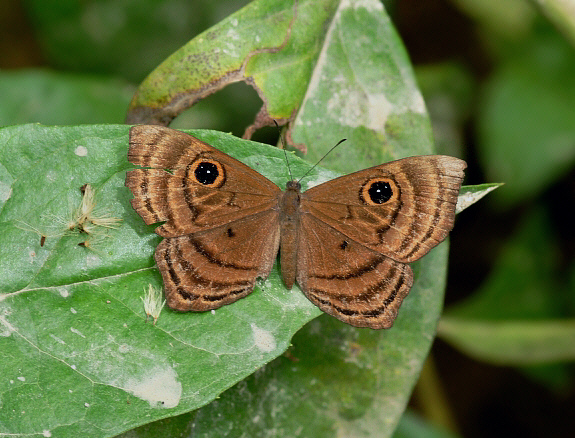 Mesosemia zorea, female, Manu cloudforest, 1700m, Peru – Adrian Hoskins
Mesosemia zorea, female, Manu cloudforest, 1700m, Peru – Adrian Hoskins
Introduction
There are 1324 known species of Riodinidae in the neotropical region, 121 of which are placed in the genus Mesosemia, and a further 8 in the closely related Semomesia.
Butterflies of both genera are commonly known as Eyemarks, due to the prominent ocelli located in the discal cell of the forewings. All Mesosemia and Semomesia species are sexually dimorphic. The males of many are metallic blue, marked with fine black lines and a black apex, while their females are typically dark brown, and often marked with prominent white bands. In most species there is a series of fine wavy black submarginal lines on the hindwings. In both sexes the underside pattern is similar to that of the upperside, but paler and less contrasty.
In zorea the male has a very dark metallic blue ground colour, while the female is an earthy brown.Mesosemia zorea occurs in Colombia, Ecuador, Peru and Bolivia.
Habitats
This species is found in undisturbed rainforest and cloudforest at altitudes from about 800-2000m.
Lifecycle
I have no data regarding zorea but the lifecycle is likely to be similar to that of other Mesosemia species as follows: The eggs are white and laid singly on stems or on the undersides of leaves. The foodplants include Psychotria, Faramea, Guettarda, Cephaelis, Cephalanthus and other understorey Rubiaceae. The larvae are dull green, plump and slightly flattened. They have a series of flattened lateral lobes below the spiracles, and tufts of short stiff setae on the back and sides.
Adult behaviour
Males are usually seen singly, but sometimes several can be found flying together in places where trees have fallen and created small light gaps in the forest. The butterflies have a rapid and erratic flight. They settle frequently on the uppersides of leaves. After landing they immediately proceed to walk about over the leaf, always holding their wings half open. As they walk they constantly change direction, and move with a jerky robotic or “clockwork toy” movement. In cloudy or rainy weather they rest beneath the lower leaves of bushes or saplings.
